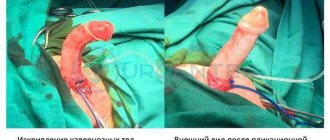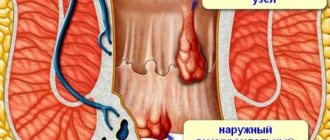Prader-Willi syndrome is a rare genetic disorder that causes a wide range of physical symptoms, learning difficulties and behavioral problems. The disease can usually be noticed soon after birth.
Symptoms of Prader-Willi syndrome
Prader-Willi syndrome can cause a wide range of symptoms and affect a child's physical, psychological and behavioral development.
Lethargy
Fatigue caused by muscle weakness usually occurs soon after birth and is medically known as hypotonia. With it, the child may not have a full range of movement, cry less, suck incorrectly, and also lose weight before one year.
Poor sexual development
Boys may have an abnormally small penis, or one or both testicles may still be inside their abdomen (undescended testicles). Little girls will also have underdeveloped genitals.
Children with Prader-Willi syndrome experience puberty later than usual and may not go through full development into adulthood. For example: boys may have a high-pitched voice and little facial and body hair. Girls often don't start menstruating until they're 30, and their breasts remain underdeveloped. When periods do occur, they are usually irregular and very light.
It is almost unknown whether men or women with Prader-Willi syndrome have children. People with this condition are usually infertile due to underdeveloped testicles and ovaries. However, sexual activity is usually possible.
Distinctive external features
Children with Prader-Willi syndrome have several distinctive features, including:
- almond-shaped eyes;
- strabismus;
- narrow forehead;
- at the temples there is a narrow bridge of the nose;
- thin upper lip and downturned mouth;
- unusually light hair, skin and eyes;
- small hands and feet.
These features are usually noticeable immediately after birth.
Increased appetite
Children with Prader-Willi syndrome have an increased appetite, a condition called hyperphagia.
Between the ages of 1 and 4 years, the child begins to show increased interest in food, ask for extra food and misbehave in order to get more. This behavior increases during childhood and is observed in all patients with Prader-Willi syndrome.
Behaviors may include:
- tantrums and aggression to get food;
- interest in pictures of food, food-related games, or discussions of food;
- food theft;
- eating unsuitable foods, frozen or raw foods, or food waste.
Children with Prader-Willi syndrome can tolerate much larger amounts of food before the body automatically vomits it back, and they are not as sensitive to pain. Therefore, patients can even eat things that a person would not normally consider as food. Because of this, children with Prader-Willi syndrome are at increased risk of:
- food poisoning;
- strangulation;
- stomach rupture.
Vomiting and abdominal pain are the two most common signs of gastric rupture.
Children with Prader-Willi syndrome do not always become obese and can remain slim if diet and nutritional issues are controlled. Such patients will never learn to control their food intake themselves. They also have a slow metabolism, and require less food and calories than their peers.
Decreased muscle tone means they are less physically active and do not burn as much energy as others.
Learning difficulties and developmental delays
Most children with Prader-Willi syndrome have mild to moderate learning difficulties and low IQs. This means it will take longer for your child to reach important developmental milestones. For example, children with Prader-Willi syndrome typically begin sitting at about 12 months and walking at about 24 months. Many people start speaking later and have difficulty pronouncing some sounds.
Most children with Prader-Willi syndrome can attend regular school with additional support, although some may require specialized schooling.
Patients are distinguished by weak short-term memory, which cannot be said about long-term memory. Despite these problems, children with Prader-Willi syndrome tend to be good at solving puzzles such as word searches.
Short stature
Children with Prader-Willi syndrome are usually much shorter than their peers. This usually becomes obvious by the time they are 2 years old.
Low levels of human growth hormone (hCG) promote short stature, and children will not go through the typical growth spurt during puberty. If the hCG is not replaced, the average adult height for people with Prader-Willi syndrome is 159 cm for men and 149 cm for women.
Children may be prescribed an artificial version of growth hormone to stimulate growth.
Behavioral problems
Most children with Prader-Willi syndrome have difficult behaviors such as tantrums and stubbornness. Typical behavioral problems include:
- short temper and sudden attacks of rage, which can be triggered by minor events;
- stubbornness and tendency to argue;
- behavior manipulation;
- asking the same question over and over again or returning to the same topic in conversation;
- repeating the same action (for example, playing the same game or watching the same video over and over again);
- keeping a very strict daily routine - any unexpected disruption to the routine can throw the child off balance.
Although these behavioral problems can be challenging for parents, children with Prader-Willi syndrome also have many positive aspects to their personality, such as gentleness, kindness, caring, and a cheerful disposition.
Skin picking
Four out of five children with Prader-Willi syndrome are obsessed with skin. They may scratch, puncture or pull at the face or hands, sometimes using paper clips or tweezers. This can lead to open sores, scarring and infection.
Sleep disturbance
Many children with Prader-Willi syndrome have problems sleeping. They may be tired and sleep during the day, but then wake up at night or very early in the morning. Some children have interrupted breathing during sleep (sleep apnea).
These episodes cause excessive sleepiness during the day, which only worsens physical inactivity and obesity.
Sleep apnea gets worse as the child gains weight.
High tolerance to pain and vomiting
Children with Prader-Willi syndrome have a high tolerance to pain, which can be potentially dangerous. For example, a serious condition such as appendicitis causes severe pain in most people, but may go unnoticed in a child with Prader-Willi syndrome. Therefore, if a child does complain of pain, it should be taken seriously.
Abnormal curvature of the spine
Poor muscle tone means an increased likelihood of developing a curvature of the spine (scoliosis).
Other diseases
Children with Prader-Willi syndrome may develop:
- vision problems - myopia or farsightedness, strabismus;
- poor muscle tone in the intestines, which can cause constipation or bloating;
- caries due to a small amount of saliva;
- weakening of bones (osteoporosis).
Causes of Prader-Willi syndrome
Prader-Willi syndrome is caused by a genetic defect on chromosome 15. Genes contain the instructions for creating a person. They are made of DNA and are packaged in strands called chromosomes. A person has 2 copies of all his genes, which means that the chromosomes are divided in pairs.
Humans have 46 chromosomes (23 pairs). One of the chromosomes, belonging to pair No. 15, is abnormal in Prader-Willi syndrome. About 70% of cases of Prader-Willi syndrome result from missing genetic information from the copy of chromosome 15 inherited from the father. This defect is called "paternal ablation". Paternal ablation is thought to be completely random, so it is virtually impossible to have more than one child with Prader-Willi syndrome caused by paternal ablation.
However, if the condition is caused by another type of problem with chromosome 15, there is a very small chance that the parents may have another child with the syndrome.
The defect in chromosome 15 is thought to disrupt the normal development and functioning of a part of the brain called the hypothalamus. It plays an important role in many body functions, such as producing hormones and helping regulate appetite. Problems with the hypothalamus may explain some of the typical features of Prader-Willi syndrome, such as slow growth and constant hunger.
Studies using advanced brain imaging technology have shown that after eating, people with Prader-Willi syndrome have very high levels of electrical activity in a part of the brain known as the frontal cortex. It is associated with physical pleasure and a feeling of satisfaction. It is possible that people with Prader-Willi syndrome find the act of eating extremely rewarding and enjoyable and constantly seek out food to achieve this pleasure.
Another theory is that in Prader-Willi syndrome, the hypothalamus cannot judge the level of food in the body as well as normal. This means that a person with the disease always feels hungry, no matter how much food they eat.
Establishing diagnosis
A definitive diagnosis of Prader-Willi syndrome can usually be made through a series of genetic tests.
Genetic testing
Genetic testing can be used to check the chromosomes in a child's blood sample for abnormalities known to cause Prader-Willi syndrome. In addition to confirming the diagnosis, the results should also help determine the likelihood of having another child with the syndrome.
Checklist for diagnosing Prader-Willi syndrome
A checklist of symptoms known to be typical of Prader-Willi syndrome is also used to determine which children should be tested. This checklist may also be helpful to parents who are concerned about their child's development, behavior and eating habits, or to those who want to know whether their child may have Prader-Willi syndrome.
Basic criteria (one point is scored for each of the following symptoms the child has):
- flaccidity and weakness of muscles that appear during or shortly after birth;
- feeding problems and failure to grow during the first year of life;
- rapid weight gain between 1 and 6 years of age;
- characteristic facial features such as almond-shaped eyes and thin upper lips;
- insufficient activity of the testicles or ovaries (hypogonadism), leading to delayed sexual development;
- delayed physical development or learning difficulties.
Minor criteria (and each of the following symptoms counts half a point):
- lack of movement during pregnancy, such as kicking your legs in the womb, or an unusual lack of energy after birth;
- sleep disorders such as apnea;
- delayed or absent puberty;
- unusually light hair, skin and eyes;
- narrow hands;
- thick and sticky saliva;
- strabismus or farsightedness;
- problems with correct pronunciation of words and sounds;
- picking at the skin.
Total score:
- If a child is under 3 years old and scores 5 points, including at least 3 points from the main criteria, we may be talking about Prader-Willi syndrome - in this case, genetic testing is recommended.
- If the child is over 3 years old and scores 8 points, of which at least 4 points are from the main criteria, we can also talk about Prader-Willi syndrome - in this case genetic testing is also recommended.
There is no cure for Prader-Willi syndrome, but your child may receive medical support to help them cope.
Treatment of diseases in children
Poor nutrition
Babies with Prader-Willi syndrome have difficulty feeding at birth and may need to be fed through a tube that goes up the nose and down the throat into the stomach. After a few months, you can usually feed your baby normally using breast milk or bottle milk.
Dietitians and speech therapists can help with advice on what formula to give and how to encourage your baby to feed.
Undescended testicle (cryptorchidism)
For cryptorchidism in boys, surgical intervention is recommended to help correct this feature in the first or second year of life. Treatment is recommended because:
- a boy may have an increased risk of developing testicular cancer;
- The child may have problems with self-esteem.
Weight and Diet Management
The most important aspect of caring for a child with Prader-Willi syndrome is trying to manage his diet and prevent him from gaining too much weight. Your baby will never learn to control his food intake on his own, so you need to do it for him.
Nutrition tips:
- Instill good habits with a healthy diet and regular meals as soon as your baby starts eating solids - don't wait until he shows signs of increased appetite;
- do not give your child sweets and high-calorie foods;
- provide smaller portions of carbohydrates such as potatoes, rice or pasta;
- increase the amount of low-calorie foods such as vegetables, salads and fruits.
The child will not learn to control his food intake on his own, and you need to take control of everything:
- Make sure your child eats regularly.
- Cut off access to food outside of meal times. You may need to lock cabinets or the refrigerator.
- Make sure your child cannot get food from trash cans or the freezer.
- Keep food out of your child's sight.
Various medications can be used to suppress appetite, but studies have shown that all of these drugs are ineffective.
Weight loss surgery is not recommended for children with Prader-Willi syndrome because they do not have the willpower to adhere to the strict diet required after surgery.
Exercise plays an important role in maintaining a healthy weight. Children should get at least 60 minutes of exercise per day.
Many children with Prader-Willi syndrome have low energy levels, so exercise should be broken up into 5-10 minute sessions throughout the day.
Children with Prader-Willi syndrome usually prefer individual activities to team sports, such as swimming, walking, and training in the gym.
It is important not to promise food as a reward to encourage your child to participate in exercise because this may promote unhealthy behavior.
Hormone therapy
Treatment with an artificial version of human growth hormone (hCG) is usually recommended for children with Prader-Willi syndrome. HCG also has a number of other important health benefits. For example:
- increases muscle size while reducing body fat;
- increases muscle strength, which helps with developmental progress such as walking and running;
- Helps normalize facial appearance, making the distinctive facial features associated with Prader-Willi syndrome less noticeable.
It is generally recommended that growth hormone treatment be started in early childhood, between 6 months and 2 years of age.
Before you start taking it, a test to check for breathing problems (sleep study) is usually done.
Managing Behavioral Problems
Most children with Prader-Willi syndrome do best if they have a very structured environment and routine.
Tips for parents:
- Establish a regular daily routine and communicate planned changes promptly.
- Don't rush your child.
- Make sure that other people, relatives and teachers, are informed about how to interact with the child.
- Avoid eating in front of your child to prevent him from thinking about food.
Parents often learn to recognize the warning signs of a tantrum. Sometimes you can stop a tantrum before it starts by using several approaches.
For example:
- try to divert attention from the situation by doing or saying something unexpected, or by talking about a subject that interests the child;
- Invite your child to go to a quiet place for a few minutes and take a few deep breaths or listen to soothing music;
- Avoid saying things like “you better not throw a tantrum about this”;
- After a tantrum, try to remain as calm as possible.
Eating
Many children with Prader-Willi syndrome will try to eat if given the opportunity. This is not because they are naughty, but because they are unable to control their impulses when it comes to food. However, eating is a behavioral issue that must be addressed or the child may become obese.
For younger children, a verbal agreement such as “if you stick to your diet, you can play extra hours with your puzzles” is sufficient.
In older children and adolescents, a written contract may be more appropriate, especially if children with Prader-Willi syndrome respond well to clear instructions.
Most children with the syndrome will automatically lie about eating, even if the evidence is overwhelming. So instead of asking, "Did you steal that food?", say something like, "I know what you ate, and we need to talk about why it's wrong."
It is important that the child understands the consequences of his actions and what is considered acceptable behavior. If they steal food or money to buy it, always insist that they apologize and return the money.
Skin care
Frequently picking at the skin can lead to scarring and skin infections such as cellulitis, an infection of the underlying tissue. It is very important that cellulitis is detected early and treated with high doses of antibiotics.
It is recommended that your child's nails be kept as short as possible. This should help minimize skin damage.
Try to keep any affected body part covered.
Keep all areas of damaged skin as clean as possible. If your child has a history of frequent skin infections, he or she may be prescribed an antibacterial cream.
Two types of treatment that are moderately effective in preventing skin problems are cognitive behavioral therapy (CBT) and medication.
- Cognitive behavioral therapy CBT is a type of talk therapy. It aims to change unhelpful and unhealthy behavior patterns by changing the way people think. People with Prader-Willi syndrome are thought to choose the skin as a way to cope with situations such as feelings of unhappiness or boredom. CBT can help people cope with these situations.
- Medication type. A type of antidepressant—selective serotonin reuptake inhibitors (SSRIs) or antipsychotics (medicines commonly used to treat psychosis)—is sometimes recommended to treat Prader-Willi syndrome. However, these drugs may cause side effects and are usually not recommended for children under 18 years of age. Drug treatment is usually only considered if the symptoms of the skin lesion are severe enough to justify the associated risks of treatment.
Treatment of psychosis
A small number of people with Prader-Willi syndrome develop psychosis, usually in adolescence or adulthood.
Psychosis is a mental health problem that causes people to perceive or interpret things differently than those around them. Symptoms of psychosis usually begin suddenly and cause a person to act in ways that are uncharacteristic.
Psychosis can be treated with CBT or medications such as antipsychotics.
Adults with Prader-Willi syndrome
Most adults with Prader-Willi syndrome are unable to live fully independent lives, such as in their own home and have a regular job, due to behavioral and eating problems. However, they can lead an active social life and participate in volunteering. Adults with the syndrome who do not live with their parents are likely to require residential care.
Long-term problems caused by Prader-Willi syndrome
Prader-Willi syndrome in itself is not life-threatening. However, binge eating and weight gain can cause young people with the disease to develop obesity-related conditions such as:
- diabetes mellitus type 2;
- heart failure;
- difficulty breathing.
Reference - nhs.uk/conditions/prader-willi-syndrome/living-with/
What is Prader-Willi syndrome?
Prader-Willi syndrome (PWS) is a genetic disorder that occurs in approximately one in every 15,000 births.
Prader-Willi syndrome affects men and women with equal frequency and affects all races and ethnic groups. PWS is recognized as the most common genetic cause of life-threatening childhood obesity.
This syndrome was first described by Swiss doctors Andrea Prader, Alexis Labhart and Heinrich Willi in 1956 based on the clinical characteristics of nine children examined.
Common characteristics identified in the original report included small arms and legs, abnormal growth and body composition (short stature, very low lean body mass, and early childhood obesity), muscular hypotonia (low muscle tone (muscle weakness)) at birth, insatiable hunger , severe obesity and mental retardation.
This video will give a brief understanding of the manifestations of the disease:
Prader-Willi syndrome results from an abnormality of chromosome 15, and accurate diagnosis today relies on genetic testing.
Prevention
It is impossible to prevent a congenital disease; the main thing in this case is to prevent complications from occurring. Treatment of the syndrome should begin as early as possible, then it will be easier for the child to adapt to school and life in society.
Prevention of the disease includes medical and genetic consultations for families who have a predisposition to the occurrence of the syndrome. Expectant parents need to conduct a prenatal genetic study, which will help determine the structural features of the fetal chromosomes.
To improve the life of a child with PWS, constant cooperation between medical specialists, parents and the child himself should be ensured.
Life expectancy forecast
The severity of the disease depends on how much it is possible to compensate for disturbances in carbohydrate and fat metabolism with diet and medications. Diabetes mellitus and obesity lead to severe vascular complications, heart attack, and stroke. They are associated with major life risks.
The ability of DNA to self-repair is reduced; in old age, this leads to an increased risk of tumor processes. With good health control, patients live to 65 years or more .
Chromosomes and Genes: Basics
To understand the genetics of PWS, it is necessary to have a basic understanding of chromosomes and genes.
Chromosomes are tiny structures that are present in almost every cell in our body. These are the packages of genes that we inherit from our parents. Genes contain all the detailed instructions our bodies need to grow, develop, and function—our DNA.
Certain genes direct our cells to produce proteins, enzymes and other necessary substances. Each of our many genes is located on a specific chromosome. Most of the cells in our body contain 46 chromosomes - 23 inherited from our mother and 23 from our father. (Eggs and sperm usually contain only 23 chromosomes because these are the cells that come together at conception to provide the baby with the right number of chromosomes.)
The 22 pairs of chromosomes are labeled with a number based on their size (chromosome 1 is the largest pair, and chromosome 22 is almost the smallest), and the 2 chromosomes in each numbered pair contain the same genes (one set from the mother and one set from the father). The changes that cause Prader-Willi syndrome occur on a pair known as chromosome 15. The 23rd pair of chromosomes is designated the sex chromosome pair. This pair determines the gender of the child: XX for a girl, XY for a boy.
Changes or errors in genes and chromosomes are common during the formation of eggs and sperm. Some of these genetic changes will have no effect once the child is conceived; some will cause miscarriage; and some will trigger, for example, Prader-Willi syndrome, causing significant differences in how the child develops and functions.
While many genetic disorders are caused by a change in a single gene and can be passed from parent to child, PWS is much more complex.
Endocrine disorders
There are several factors that support the concept of growth deficiency in individuals susceptible to the syndrome.
- Affected individuals are short and overly obese, meaning they have low free fat mass, low bone density, and low energy use.
- This disease is characterized by disturbances in the genitourinary system. In males, problems arise with undescended testicles (over time, the testicles may drop to normal levels), and in females, problems arise with the appearance of adrenarche. In both cases, it is possible to solve the problem surgically.
How is PWS diagnosed?
This syndrome is diagnosed using a blood test that detects genetic abnormalities specific to Prader-Willi syndrome—called a “ DNA methylation test .” The FISH (fluorescent in-situ hybridization) method identifies the syndrome by deletion, but does not diagnose other forms of PWS.
DNA methylation testing identifies all types of this syndrome and is the test of choice for diagnosis. If methylation testing is performed first, additional testing may be required to determine whether PWS is caused by a paternal deletion, UPD, or imprinting mutation.
In cases where an imprinting mutation is suspected, blood can also be taken from the parents.
What causes Prader-Willi syndrome (causes)?
Prader-Willi syndrome occurs as a result of the absence of active genetic material in a specific region of chromosome 15 (15q11-q13). Typically, people inherit one copy of chromosome 15 from their mother and one from their father. The genes that cause PWS are active only on the chromosome received from the father.
In Prader-Willi syndrome, a genetic defect that causes inactivity of chromosome 15 from the father (paternal chromosome 15) can occur for the following three reasons:
- PWS by exclusion : Most often, part of chromosome 15 that was inherited from the father is missing or deleted in this critical region. This small deletion occurs in approximately 70% of cases and is usually not detected by routine genetic testing such as amniocentesis.
- PWS by uniparental disomy : Another about 30% of cases occur when a person inherits two chromosome 15s from their mother and none from their father. This type of inheritance is called uniparental disomy (UPD).
- PWS by mutation impression : finally, in a very small percentage of cases (1-3%), a small genetic mutation in Prader-Willi syndrome leads to the fact that the genetic material of the paternal chromosome 15, although present, is inactive.
How do these genetic defects cause the symptoms seen in Prader-Willi syndrome?
Chromosome 15 is one of the most complex regions of the human genome. Although significant advances have been made in understanding and characterizing the genetic changes associated with Prader-Willi syndrome, the precise mechanism by which the absence of functional genetic material leads to symptoms associated with PWS is not understood.
Scientists are actively studying the normal role of genetic sequences in the PWV region and how their loss affects the hypothalamus and other body systems.
Are there differences in the severity of PWS depending on genetic subtype?
There may be some subtle differences in the traits of PWS based on genetic subtype: for example, individuals with deletions may be fair-skinned with blond hair compared to other family members and be more susceptible to seizures and convulsions; and those who have problems with PWS due to uniparental disomy may be at higher risk for mental illness in young adolescence.
In general, however, there is significant overlap between the different genetic subtypes. It is likely that thousands of genes outside the PWS region that show normal variation between individuals also contribute significantly to the variability in Prader-Willi syndrome symptoms between those who have the disorder.
Is it easy for such children to socialize?
Marina A.: These children have complex delays in psychomotor and speech development; at an older age they are diagnosed with “mental retardation” (most often of moderate or mild degree), many with disabilities. There is also delayed puberty: fifteen-year-olds look eight years old. Therefore, there is a delay in social development. And here it’s either home schooling or correctional kindergartens and schools. Much depends on the environment and family. Everything is individual: there are cases when children are thin, and in development they are almost as good as ordinary children.
How is Robert and Christina’s relationship with your other children?
Marina A.: The eldest son, Leon, was waiting for his brother. Kissed my belly when I was pregnant. He has treated him with such tenderness since birth. During feedings, when I poured milk into Robert through the tube, Leon sat next to him and held his brother’s hand, and approached this process very responsibly. But their age difference is less than two years. And now he is so happy about his brother’s success. For example, when Rob is trying to stand, Leon comes running and tells me: “Can you imagine, Robert was standing! I counted to three, and he stood there!” I am very glad that Robert has an older brother, he is a huge support for everyone.
Leon with his younger brother Robert
Marina V.: Christina is my fifth child, and other children see that she is different and ask questions. I believe that the main thing in relationships with children is honesty, so I explain everything to them. They help me look after her, play with her, and do educational exercises together. They worry about her when she needs injections. We call them power shots. The whole family is involved.








